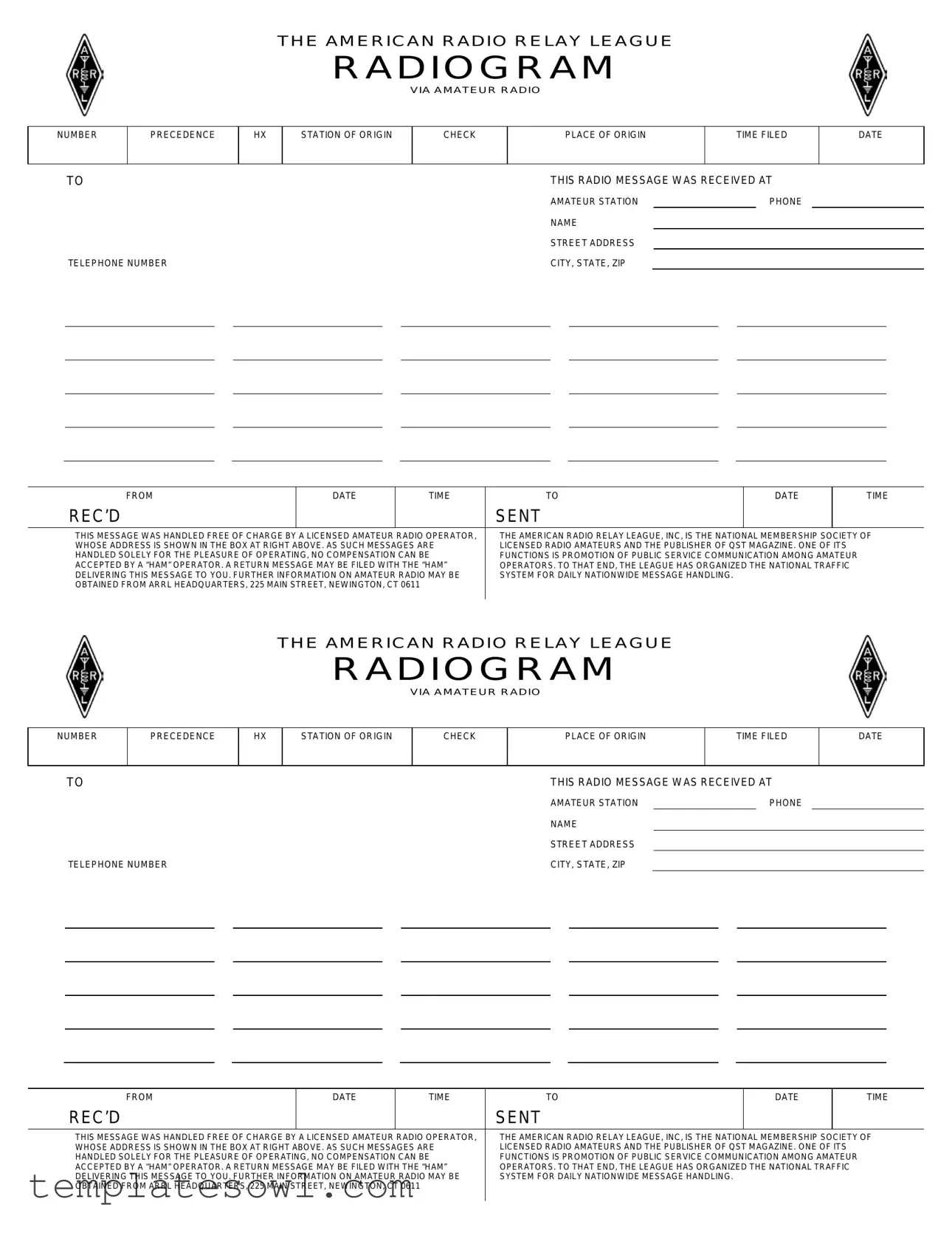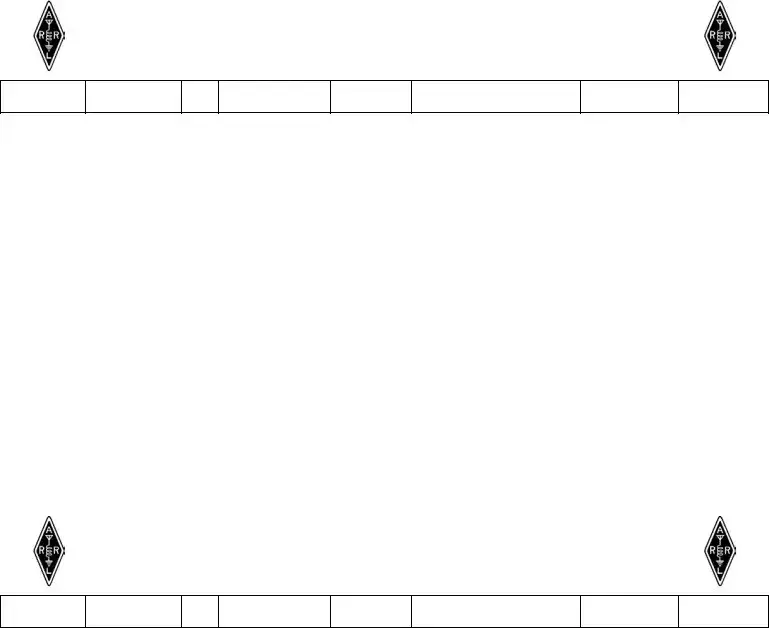What is the ARRL Radiogram form?
The ARRL Radiogram form is a standardized message format used by amateur radio operators to facilitate communication during emergencies and public service events. It allows for clear transmission of important information in a consistent manner, ensuring that messages can be delivered accurately and efficiently among operators.
Who uses the ARRL Radiogram form?
This form is primarily used by licensed amateur radio operators, often called "hams." They utilize the Radiogram to communicate messages that may be critical during emergency situations, or for routine message handling among radio enthusiasts. It serves as a tool for organized communication during public service events where rapid information dissemination is essential.
Is there a fee associated with sending a Radiogram?
No, messages sent using the ARRL Radiogram form are handled free of charge by licensed amateur radio operators. The purpose of this system is to promote public service communication and ensure that messages can be relayed without any cost to the sender or recipient.
What information is required on the ARRL Radiogram form?
The ARRL Radiogram form requires several key pieces of information including the Station of Origin, place and time filed, the recipient's name and address, and optional phone and message details. This structure helps ensure that the message is clear and can be effectively delivered to the intended individual.
Can I send a personal message using the ARRL Radiogram form?
Yes, personal messages can be sent using the ARRL Radiogram form. However, it's important to remember that messages should be concise, focused on important information, and comply with amateur radio regulations. Messages of a purely commercial nature or that violate privacy are discouraged.
What happens if my message cannot be delivered?
If a message cannot be delivered, the operator handling the Radiogram will typically attempt to relay it through alternative amateur radio operators or find another means of reaching the recipient. Communication within the amateur radio community is supportive, and efforts will be made to ensure your message gets through.
How can I obtain more information about amateur radio and the ARRL Radiogram?
For further information about amateur radio and the ARRL Radiogram, you can contact the ARRL headquarters directly at their address: 225 Main Street, Newington, CT 06111. They can provide guidance on amateur radio practices, licensing, and community events.
How do I fill out the ARRL Radiogram form?
To fill out the ARRL Radiogram form, follow the clear sections provided on the form and ensure all required fields are completed. Be concise in your messaging to keep it effective, and ensure accurate spelling and details to avoid confusion in the relay process. Assistance is often available from experienced operators if you need help.
Is there a specific time frame for sending a Radiogram?
There is no strict time frame for sending a Radiogram. Operators typically prioritize messages based on the urgency, but there can be slight delays depending on the radio conditions or operator availability. In emergencies, operators will do their best to handle messages as quickly as possible.
What is the significance of handling messages through the ARRL?
Handling messages through the ARRL promotes the spirit of community and public service inherent in amateur radio. By facilitating unimpeded communication paths, the ARRL supports the notion that amateur radio can be a crucial resource during emergencies and fosters bonds among radio operators across the nation.

